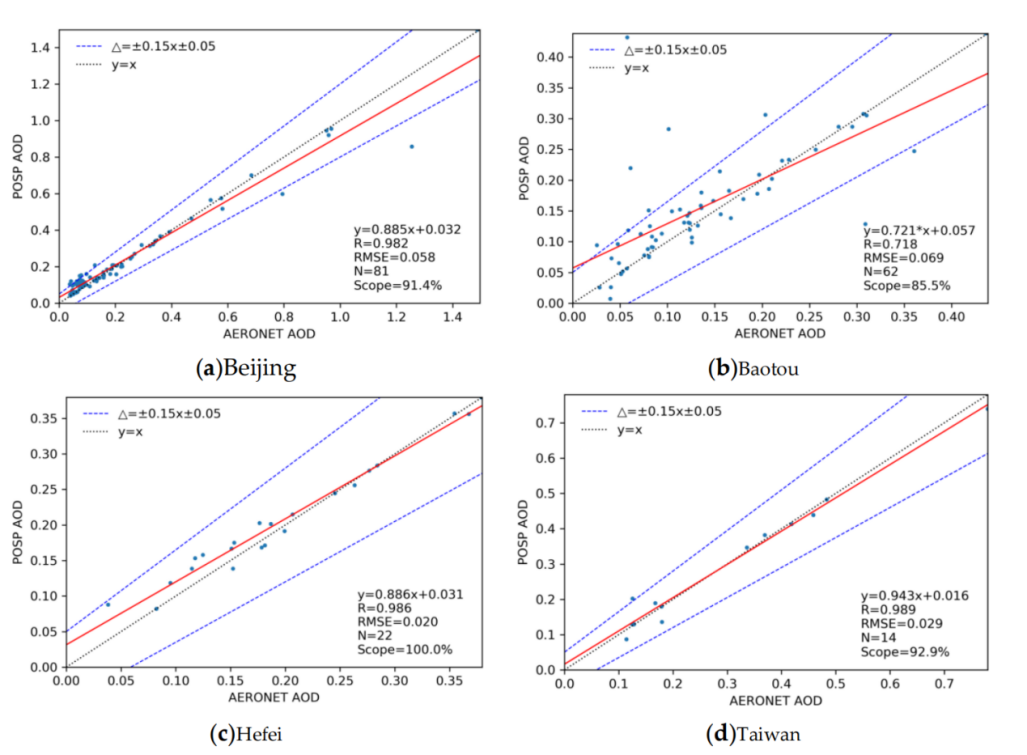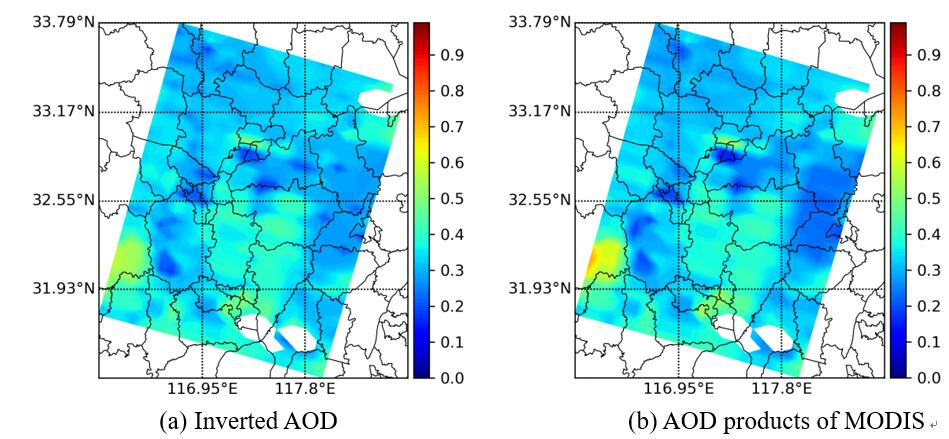
To meet the requirements of single-angle and multi-band polarization aerosol detection, a research team led by Professor SUN Xiaobing from Anhui Institute of Optics and Fine Mechanics, Hefei Institutes of Physical Science (HFIPS), Chinese Academy of Sciences (CAS) proposed an optimal inversion algorithm based on the combined utilization of multi-band intensity and polarization information.
The result was published in Remote Sensing recently.
Aerosol optical depth (AOD) is used to characterize the extinction effect of aerosol on solar radiation, which plays an important role in remote sensing atmospheric correction and fine particulate pollution assessment.
The inversion algorithm proposed in this research mainly doesn't need the prior information of the ground. It used the polarization information of the short-wave infrared band to separate the ground and atmospheric information, and then used the scalar information to obtain the final result.
"By decoupling the surface and atmosphere," said Prof. SUN Xiaobing, "our method avoided the inversion error and spatio-temporal matching error caused by the late updating of the surface reflectance database."
Researchers used the observation data of a high-precision polarization scanner (POSP) onboard the hyperspectral observation satellite (GF-5B) to verify the algorithm.
"Compared with AOD products of AEROENT stations in different regions, the advantages are obvious," said Prof. SUN, "One is that the algorithm can retrieve AOD over different surfaces. Another is that the effectiveness of the algorithm under different pollution conditions is verified with MODIS AOD products."
This research is supported by the research project of aerospace science and technology innovation and application, the project of China high-resolution Earth observation system and the project of China Resources Satellite Application Center.

Figure 1. Comparison of inversion results of POSP and AEROENT products. (Image by FAN Yizhe)

Figure 2. Comparison of POSP AOD inversion results (a) and MODIS products (b) (May 4, 2022) (Image by FAN Yizhe)